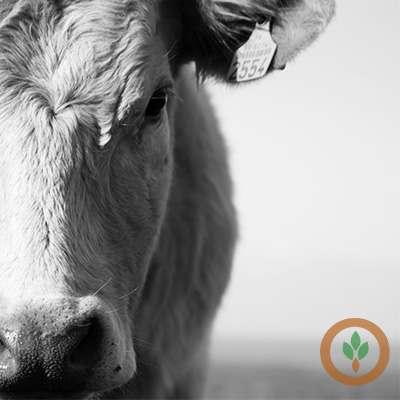Market News
Cattle, hog futures finish Friday mixed

Chicago Mercantile Exchange live and feeder cattle futures were mixed, consolidating at the end of the year, with boxed beef mixed at midday. There was periodic support from the week’s higher direct trade, but not enough to pull contracts to a fully higher finish. February live was down $.42 at $168.50 and April was $.02 lower at $172.25. January feeders were down $.17 at $222.30 and March was $.02 lower at $223.10.
Direct cash cattle markets are mostly quiet. There was light trade at $173 live in Kansas, $1 higher than Thursday, and even lighter business at mainly $273 dressed. Thursday’s trade was light, primarily at $172 live, up $1 from the previous week’s weighted averages, and mostly $272 to $273 dressed, $2 to $3 higher. Asking prices for what’s left on the show list were $174+ live and $274+ dressed, with bids at $172 and $173 live and $273 dressed. 2023 U.S. beef export sales were 2,100 tons, sharply lower than the previous week, with 2024 sales at 11,600 tons.
Boxed beef closed mixed with light to moderate movement. Choice was down $1.57 at $289.71 and Select beef was up $1.09 at $260.33. The estimated cattle slaughter of 125,000 head was up 12,000 on the week and 6,000 on the year.
At the Eastern Missouri Commission Company feeder cattle sale, compared to the previous test, there was a light run, with a firm to higher undertone despite a lack of comparable supplies. The USDA says demand was good for that light run with receipts down from both the prior report and the final sale of 2022. 39% of the feeder offering were heifers and 36% were steers, with the remainder bulls. 58% of the total feeder run weighed less than 600 pounds. Medium and Large 1 to 2 feeder steers were reported at $254 to $271 and 700-to-800-pound steers brought $217 to $231. Medium and Large 1 feeder heifers weighing 500 to 600 pounds sold at $226 to $239.50 and 600-to-700-pound heifers ranged from $218 to $227.
For the week in South Dakota, alfalfa prices were steady in a narrow comparison. The USDA says demand was only moderate for all classes. Beef cattle producers have been able to feed less hay because of the mild winter and dairy cattle producer demand is down because of low milk prices. Large rounds of good quality alfalfa sold at $250 with large rounds of fair at $200, while large rounds of premium grass brought $180 and large rounds of fair to good quality grass at $160. Rounds of corn stalks sold at $40 and large squares of wheat stalks were delivered at $160. At the Rock Valley Hay Auction in Iowa, the market was steady. Large rounds of premium alfalfa were reported at $212.50 to $235 with large squares at $247.50. Large rounds of good to premium alfalfa ranged from $190 to $207.50 with medium squares at $212.50, while good quality large rounds brought $170 to $185 and large squares were pegged at $170. Large rounds of premium grass sold at $215, with good to premium at $190 to $195, good at $170 to $185, and fair to good at $140 to $160. Rounds of corn stalks were reported at $55 to $65.
Lean hog futures were mixed, mostly lower, on spread trade and contracts’ premium to the cash index. On the positive side of things, improved pork demand did provide some occasional support. February was down $.47 at $67.97 and April was $.15 lower at $74.85.
Cash hogs were steady to lower with light closing negotiated numbers for the major direct markets. Demand picked up steam as the day went on, but it was a fairly quiet round of business ahead of another slow weekend and slow start to the coming week because of the New Year. Many buyers either had the needed near-term numbers on hand or were willing to wait for 2024. The industry continues to monitor holiday retail clearance while preparing for the full implementation of California’s Proposition 12 regulations. 2023 pork export sales were down on the week at 23,800 tons, while 2024 sales were 24,000 tons, with Mexico leading the way for both years.
National direct barrows and gilts closed $2.79 lower with a base price range of $41 to $49.50 for a weighted average of $43.57, while Iowa/Southern Minnesota was down $2.37 at $45.32 and the Western Corn Belt was $2.47 lower at $43.89. The Eastern Corn Belt had no recent comparison. Butcher hogs at the Midwest cash markets were steady at $44. Illinois direct sows were steady at $28 to $40 on moderate demand for light to moderate offerings. Barrows and gilts were steady at $25 to $35 on moderate demand and offerings. Boars ranged from $5 to $20.
Pork closed $2.15 higher at $84.76. Butts, picnics, ribs, hams, and bellies were firm to sharply higher, with loins sharply lower. The estimated hog slaughter of 485,000 head was up 57,000 on the week and 3,000 on the year.
The USDA says compared to the previous week, early weaned pigs were steady and feeder pigs were steady to $1 lower on light demand for moderate offerings. Receipts were up on the week, down on the year. On the cash basis, for early weaned pigs, the total composite range was $22 to $40, for a weighted average of $34.94, with the total composite formula range at $34.10 to $52.26, for a weighted average of $42.41, putting the weighted average for all early weaned pigs at $37.86. The cash composite for feeder pigs was $46 to $50 with a weighted average of $47.02.

Add Comment